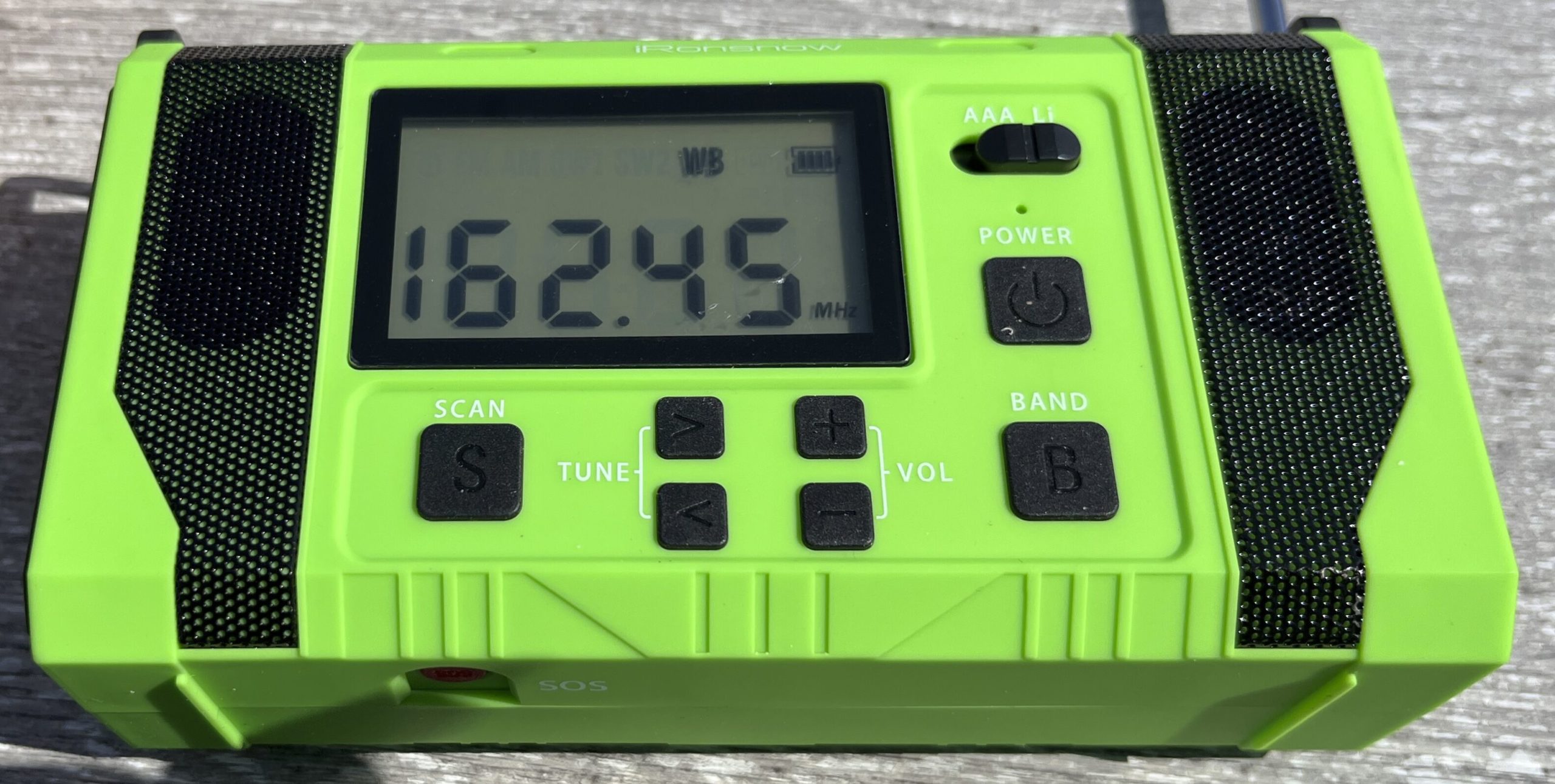I have a new radio this week, an iRonsnow IR-688 emergency radio.

I bought it on sale for $34.99 from Amazon, not to collect or to test, but to sit in the window and get weather alerts. It did arrive, however, in time to participate in my Thunderous Clash of the Weather Radios.
I don’t plan to make an in-depth review because while it does receive shortwave, it’s not particularly useful in the genre both for lack of sensitivity and because tuning takes a very long time. Todd Erbert has a fine YouTube video for someone interested in deciding whether or not to buy one of these. His conclusion is that it’s not worth it unless maybe on sale for $35 or less.
Several of my radios are capable of receiving weather alerts, but only 3, including this one, that could be classed as emergency radios: solar charging, crank charging, flashlight, SOS siren, high-capacity battery and the ability to charge other devices. The other two didn’t work out for me.
The iRonsnow IR-688 has an advertised 10,000 mAh charging capacity that is provided by 2X 5000 mAh (without disassembling the radio, I can’t say what the two batteries are, but 21700’s are a good bet). Todd Erbert measured the capacity and concluded that the batteries actually totaled 8000 mAh, but that is still a lot.
It reminds me a lot of my old Mesqool CR-1009, but that’s not worth detailing. The important bits are:
- Advertised 10,000 mAh reserve power (or 8,000 measured)
- Solar charging
- Crank charging
- SOS siren
- Flashlight, flood light and reading light
- Digital display
- Can be powered by 3 AAA batteries
- Permanently attached battery door
- Handle
- Can charge external devices (USB A jack)
- Charged via USB-C, but not with USB-C power distribution chargers. USB-A cable is supplied.
- Stereo (2 speakers)
- ATS memory
It’s advertised as IPX3, defined as:
IPX3 is a water resistance rating that means a device is protected from sprays of water up to 60°. The equipment being tested must not experience any harmful effects from the water being sprayed at it from any direction.
There is an easy way for water to get in the battery door, so don’t spray it from the back or leave it in the rain.
The radio seems to work and I received stations on all bands. FM stereo was nice for such small speakers, but nothing to write home about. This radio suffered from a lot pop with everything you did when using headphones. Headphones were OK otherwise, but not outstanding.
The manual is extremely brief, although the radio isn’t complicated. One warning left me pondering: “In case of a crash, please directly dial “AAA.” It would seem more normal to dial “911” but maybe China is different. The radio has auto tune storage (ATS) that scans the full bands, not just broadcast frequencies, turning a long process into a painfully long process. There is no specification of how many memories are supported. It seems to be at least 30 per band.
There are two shortwave bands: 3.2 – 10 MHZ and 10 – 22 MHz. Why two bands? Given the painfully slow tuning, it helps a little to get to a closer staring point. It also gives more ATS memory slots.
In testing, I found the performance good on FM, about average for the radios I own. MW was essentially useless. It only weakly received my strongest local station during the daytime, although it did pick up more at night.
The burning question is how long it can stay on the window sill in weather alert mode supplemented by the tiny solar panel.

 [robot emoji] symbol. Content comes most often from Microsoft Copilot, bit may also come from Perplexity, ChatGPT or Deep Seek.
[robot emoji] symbol. Content comes most often from Microsoft Copilot, bit may also come from Perplexity, ChatGPT or Deep Seek.